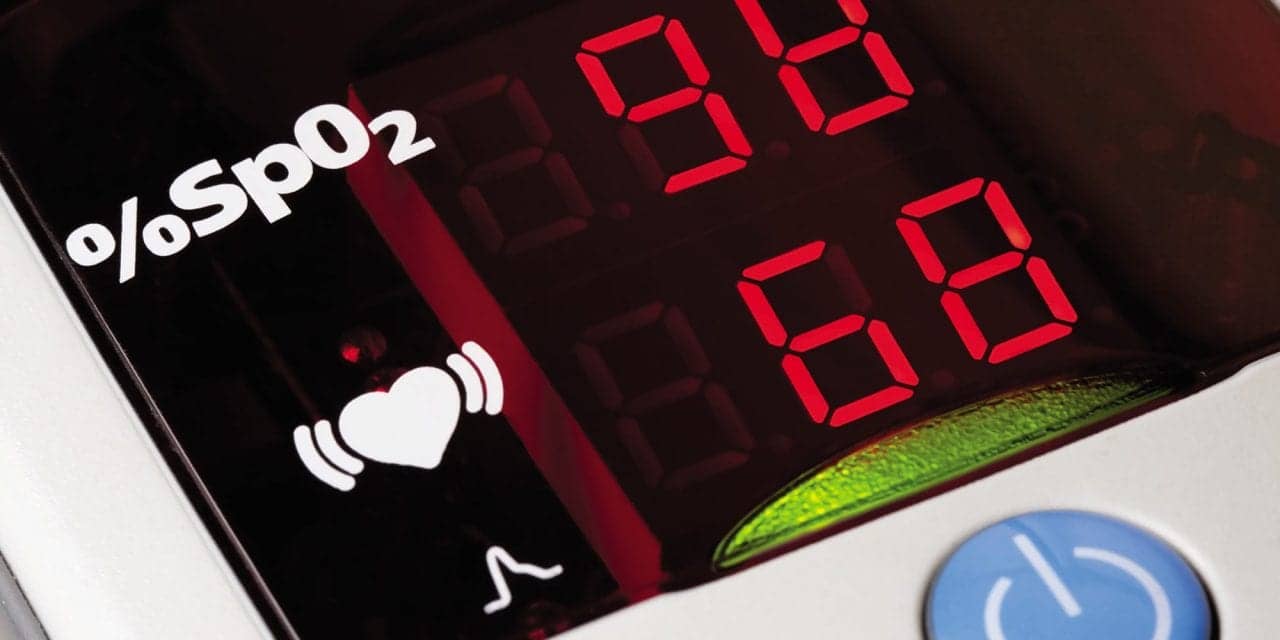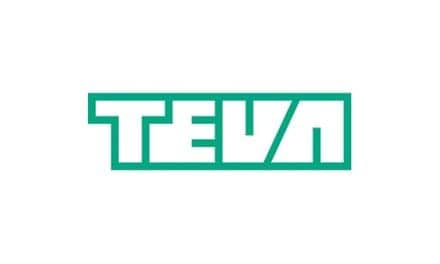Patient monitoring is critical to preventing respiratory events and ensuring positive patient outcomes in the hospital. But what role does remote monitoring play for these patients post-discharge?
By Phyllis Hanlon
Hospital readmissions have imposed a significant financial burden on the healthcare system in the United States. The Agency for Healthcare Research and Quality (AHRQ) reported the average cost for readmissions in 2016 was $14,400. The Center for Health Information and Analysis noted that hospital readmissions cost Medicare approximately $26 billion annually. More important, readmissions negatively affect patients, often leading to decline in health condition.
Throughout the last 50 years, different forms of remote patient monitoring have been utilized to help manage health conditions post-discharge and reduce unnecessary rehospitalizations.
In 2018, Canada implemented “The Smart Program,” a remote monitoring “intervention that aims to provide clinical benefit to patients and economic benefit to health care payers.” A study1 recorded patient data from three months prior to study period, during the program and three months after completion of the study. The study included 74 patients with a diagnosis of either COPD or congestive heart failure (CHF) who used medical devices at home and automatically sent results to their home health care professional. The results showed a “potential 68% and 35% reduction in ER visits and hospitalizations, respectively.” Furthermore, the cost of ER visits decreased from $243 Canadian ($185 US) at baseline to $67 ($51 US) during the follow up period; hospitalizations were reduced from $3,842 to $1,399 Canadian ($2,925 to $1,066 US).
Another study2 recommended a multipronged approach to home monitoring that identifies the patient population that will derive maximum benefits. The authors added that pinpointing the variables to be measured, such as heart rate, blood pressure, pulmonary artery pressures or intrathoracic impedance, would provide information most useful in monitoring patients. Furthermore, the study indicated that recording patient adherence to medication regimens should be considered.
When it comes to monitoring patients with respiratory conditions, Jason A. Case, leader in health informatics and patient monitoring at Medtronic, agreed that, in general, the concept of remote monitoring is to reduce hospital readmissions. Discharged patients are in a relatively healthy state, but may still be at risk for complications, although the risk is low, he explained. “A home surveillance system helps manage a lower risk population and can have a positive impact on outcomes,” he said. “The [monitoring] system has to show good specificity so only patients who really need it will be readmitted.”
Case reported that remote monitoring systems for patients at risk of respiratory failure and similar conditions should include key respiratory parameters. “Parameters such as pulse oximetry and end tidal CO2 are useful in detecting respiratory compromise,” he said, “which, if left unaddressed, can lead to a sentinel event.”
Additional Factors to Consider
Case noted that remote monitoring is primarily about parameters, but also about form factor, which relates to transparency and convenience for patients. “Form factor is all about how you make a more consumable system for patients. If you want a patient to comply with monitoring, they have to feel it’s not a burden,” he said. “If I’m connected to a monitor with a lot of wires and have to plug and unplug them when I walk around my house, it’s a nonstarter.” Patients might be more likely to use a remote monitoring system that is convenient, such as an application on a phone. “The challenge is to converge sensitivity and specificity of a medical device with easy-to-consume digital technology,” Case said.
Interoperability is another critical factor related to remote monitoring systems. “If we don’t have a way to get the right information to the right place when events happen, then that’s a barrier,” Case said. Systems should have the capability of transmitting data from the device to a patient’s electronic health record for clinician review and tracking.
In an age when computer hacking is becoming more prevalent, security and privacy concerns during remote monitoring also need to be addressed. Some industries have made significant inroads in this area and the medical industry is making some progress as well. Patients’ health records contain critical information that could be stolen and steps must be taken to safeguard that information. “Security is a dragon we have to slay,” Case said.
Remote Monitoring in Acute Settings
Medtronic has a focus on solving important problems in an acute setting, according to Case. “This setting is between home and high acuity, typically a general care floor or post surgical ward,” he said. “Patients often stay here before going home.”
Clinical staff has responsibility to monitor several different aspects of patient care, but compared to an intensive care unit (ICU), the bed to nurse ratio is high, Case explained. “There are not a lot of specialists on this floor and most often the standard of care is periodic checking. Every four hours staff checks pulse oximetry and blood pressure to make sure the patient is okay.”
Remotely monitoring these patients can help maintain critical oversight. Case pointed out that Medtronic devices measure the same parameters that are recorded in a home-based system; for example, using pulse oximetry to detect respiratory compromise, which might occur in a patient using pain medication. “We monitor [these patients] and make the information accessible to staff circulating on the floor or at the central nursing station,” Case said. Case asserted that remote monitoring in this clinical setting might prevent opioid overdose and other medical situations that could lead to patient deterioration.
Furthermore, remote patient monitoring could reduce transfer to the ICU and sentinel events, according to Case. “Monitoring risk-stratified patients is ultimately good for the patient and cumulatively reduces cost of care since interventions are reduced.” Case emphasized that the evolution of technology in remote patient monitoring is leading to transparent, effective and accessible patient care. He added that cultural transformation around willingness to accept and use high-tech solutions is the future in healthcare.
Enhanced Communication
Remote monitoring could also be an effective way to promote adherence to physician-prescribed therapy. For instance, Hillrom created two systems that employ advanced technology to track and transmit patient data, according to Andy Reding, Hillrom’s vice president and general manager, Respiratory Health.
In 2016, Hillrom introduced the VisiView Health Portal, a digital health product designed to enhance communication between health care teams and patients. The VisiView Portal is a secure, cloud-based system that automatically receives information from respiratory care devices in a patient’s home. Patients and health care teams share a user-friendly dashboard to view therapy data and trends for enhanced teamwork.
That year, Hillrom also brought to market the VisiVest Airway Clearance System, the first airway clearance system with Bluetooth connectivity. The VisiVest Airway Clearance System provides the same therapy as The Vest System and connects patients and their care team via the VisiView Health Portal. This high frequency chest wall oscillation (HFCWO) works to loosen and dislodge mucus from the bronchial walls and move it to larger airways where it can be cleared by coughing or suctioning. If not removed, retained secretions may contribute to increased rates of respiratory infection, hospitalization and reduced lung function. The VisiVest System connects via Bluetooth to a 2NetHub to securely transmit therapy data (via cellular connection) to the VisiView Portal.
In 2017, Hillrom introduced the Monarch Airway Clearance System, a mobile device that provides high frequency chest wall oscillation (HFCWO) therapy in a vest with a personalized fit. The Monarch System uses Pulmonary Oscillating Discs (PODs) that provide targeted kinetic energy and HFCWO to the lungs to thin mucus and generate airflow, moving mucus up and out of the lungs. The Monarch System allows a patient to be active and productive while receiving therapy. It also incorporates LTE or WiFi technology to connect patients and their care team via the VisiView Health Portal.
Tracking Trends
Reding reported that both the VisiVest and Monarch Systems have the capability to securely transmit patients’ airway clearance therapy session data, ie, how many minutes the session lasted, duration of cough pauses, frequency settings, to the VisiView Health Portal. “Here the patient, caregiver and health care teams can all view accurate, prompt, and historical therapy data through the easy-to use dashboard. This connectivity fosters a closer partnership between patients and healthcare teams, so treatment decisions by caregivers can be more tailored and responsive, which may result in better therapy adherence,” he said. “It also removes the burden of relying on patients’ memory and/or hassle of manually tracking.”
The VisiView Portal uses “badges” and an “adherence score” to help the patient stay motivated, and as quick indicators for the healthcare team to show how well a patient is adhering to their therapy. Reding said, “It’s like a fitness tracker for lungs.”
Today, the VisiView Health Portal provides more than 1,000 clinics and 400 healthcare teams access to therapy data for more than 9,000 VisiVest and Monarch System patients, Reding noted.
Ease of use is key to patient adherence; the portal for the VisiVest or Monarch System was designed to be intuitive, and a Hillrom representative or senior application specialist can offer onboard training. “These resources are also available for on-going support for troubleshooting connectivity issues, etcetera,” said Reding. Patients have access to Hillrom’s national network of trainers who perform initial in-home set-up for their respiratory health products. Reding explained that during the patient’s initial set-up, trainers will discuss the connectivity capability with the patient, set-up instructions, and how to initiate their VisiView Health Portal User account.
While remote patient monitoring holds promise for reducing health care costs and hospital readmissions, there are some barriers to consider. A 2018 literature review3 determined that disparities in the types of patients monitored and technology used as well as the disease stage could affect outcomes. The authors suggest standardizing techniques and predictive capabilities to improve monitoring.
RT
Phyllis Hanlon is a contributing writer to RT. For more information, contact
[email protected].
References
- Isaranuwatchai W, Redwood O, Schauer A, et al. “A remote patient monitoring intervention for patients with chronic obstructive pulmonary disease and chronic heart failure: pre-post economic analysis of the Smart Program.” JMIR Cardio. 2018 Vol. 22 No. 2; e103191.
- Bui AL, Fonarow GC. “Home monitoring for heart failure management.” Journal of the American College of Cardiology. Vol. 52. No.2, 2012. Doi:10.1016/j.jacc.2011.09.0444.
- Clemens K, Pesek B, Anderson M, et al. “Telemonitoring to manage chronic obstructive pulmonary disease: Systematic literature review.” JIR Medical Informatics. 2019 Mar 20;7(1):e11496. doi: 10.2196/11496.










